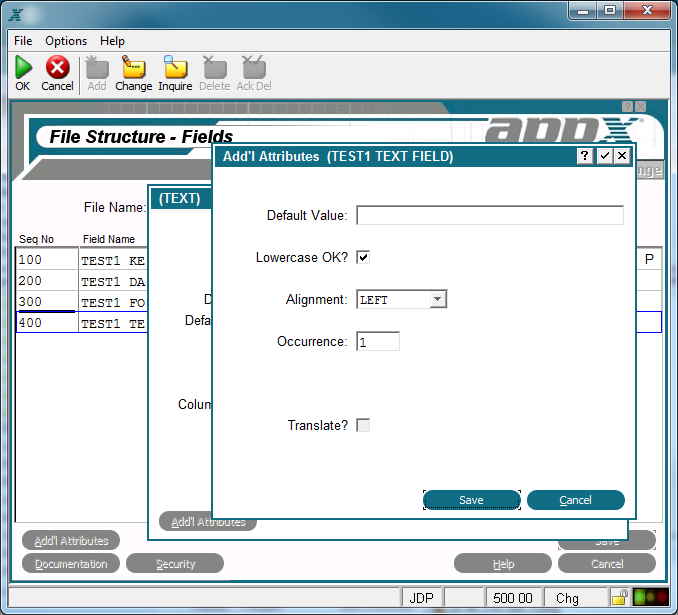Chapter 2-4: Files and Fields |
Text Fields Additional Attributes From the Text field overlay, you have an Additional Attributesoption. The Text field Additional Attributes overlay is shown below.
Text Field Additional Attributes Overlay The Text Field Additional Attributes Overlay contains the following fields: Default Value indicates the value that should be placed into this field when adding new records to a file. This value can be changed by the user, if desired.
Lowercase OK? indicates whether or not a modifiable item on an interactive screen can be entered in upper- and lowercase letters. If 'no' Alignment determines whether or not data in a field is aligned for storage and/or display and, if so, the type of alignment. The Alignment options areNONE, LEFT, JUSTIFIED, RIGHT and CENTERED. The default is NONE. Occurrence determines the number of times a field is present in a record. If blank, APPX assumes a value of 1. This field may contain up to five numeric characters and is restricted to a maximum of 32,767. See the Occurrence section for a more comprehensive discussion of this field. Translate? normally indicates if the value of the field should be translated into a designated language if APPX's Language Translation feature is being used. However, this option is not available for a text file field (unlike a text work field) and cannot be selected. |
Application Design Manual "Powered by Appx Software"1027 ©2006 By APPX Software, Inc. All Rights Reserved |
